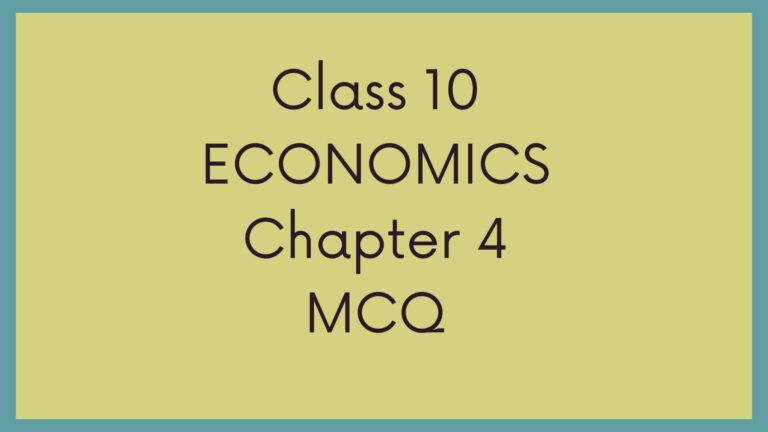Class 12 Geography Chapter 2 Question Answers | World Population important Questions
This article is focused on providing you with the best Class 12 Geography Chapter 2 Question Answers | World Population important Questions. Use this for your exam preparation and to boost your knowledge. All the questions are based on my Class 12 boards experience of 2025, where I scored 98 out of 100. Check our YouTube for detailed videos.

The World Population – Important Questions
3 Marker Class 12 Geography Chapter 2 Question Answers
Q1. Define population distribution. Why is it said that the world population is unevenly distributed?
Answer: Population distribution refers to the way people are spread over the earth’s surface. The world population is unevenly distributed because 90% of people live in just 10% of land area. Some regions like the Ganga plains, Eastern China and Western Europe are densely populated, while deserts, polar regions and high mountains have sparse population.
Q2. Explain the role of water availability in influencing population distribution.
Answer: Water is the most important factor for human survival and economic activities. Areas with rivers, lakes, and groundwater attract dense population as water is needed for drinking, farming, industry, cattle, and navigation. For example, the Nile Valley, Ganga Plains and Hwang Ho Basin are among the world’s most densely populated regions due to abundant water supply.
Q3. How do landforms affect the distribution of population?
Answer: Flat plains and gentle slopes support dense population because they are favorable for farming, construction, and transport. In contrast, rugged mountains (like the Himalayas, Andes) are less populated due to harsh terrain and limited agriculture. For instance, the Ganga Plains are one of the most densely populated areas in the world, whereas Himalayan regions are sparsely populated.
Q4. Distinguish between natural growth and actual growth of population.
Answer:
- Natural Growth = Births – Deaths in a region.
- Actual Growth = Births – Deaths + In-Migration – Out-Migration.
Thus, actual growth considers migration, while natural growth depends only on births and deaths. Example: If people migrate into a country, its actual growth rate increases even if birth rate is low.
Q5. What is population density? Explain with an example.
Answer: Population density is the number of people per unit area of land, usually measured as persons per sq. km. Formula: Density=PopulationArea\text{Density} = \frac{\text{Population}}{\text{Area}}
Example: A region with 1,50,000 people in 100 sq. km has a density of 1,500 persons/sq. km. High density is found in river valleys, while deserts and polar regions show low density.
Q6. What are push and pull factors of migration? Give examples.
Answer:
- Push factors: Conditions forcing people to leave their origin, e.g., unemployment, poor living conditions, political unrest, drought.
- Pull factors: Attractive conditions at the destination, e.g., job opportunities, better education, security, and healthcare.
For example, rural poverty (push) leads to migration to cities offering jobs (pull).
Q7. Explain the first stage of the Demographic Transition Theory.
Answer: The first stage is marked by high birth rates and high death rates. Population growth is low due to epidemics, food scarcity, and poor healthcare. Life expectancy is very low, literacy rates are poor, and most people are engaged in subsistence agriculture. About 200 years ago, almost all countries were in this stage.
Q8. How does industrialisation affect population distribution?
Answer: Industrial areas provide employment opportunities, transport, and services. This attracts workers, traders, and service providers, leading to dense population. For example, the Kobe-Osaka industrial region in Japan and the Ruhr Valley in Germany are densely populated due to industrial growth.
Q9. What is meant by demographic transition?
Answer: Demographic Transition refers to the shift of a society’s population from high births and deaths to low births and deaths as it progresses from rural–agrarian to urban–industrial stage. It has three stages:
- High Fluctuating (high births & deaths).
- Expanding (high births, declining deaths).
- Low Fluctuating (low births & deaths, stable growth).
Q10. What measures are suggested to control population growth?
Answer: Population control measures include:
- Family planning (use of contraceptives, birth spacing).
- Government incentives (tax disincentives for large families).
- Awareness campaigns for small family norms.
- Improvement in women’s education & health.
These measures reduce fertility rates and improve living standards.
5 Marker Questions Class 12 Geography Chapter 2 Question Answers
Q1. Discuss the geographical and economic factors influencing population distribution.
Answer:
- Geographical Factors:
- Water availability – river valleys like Nile & Ganga are densely populated.
- Landforms – plains attract people; mountains repel.
- Climate – moderate climates (Mediterranean) are favorable; extremes discourage settlement.
- Soils – fertile soils like alluvium support dense populations.
- Economic Factors:
- Minerals – mining areas (Zambia copper belt) attract workers.
- Industrialisation – industrial regions (Kobe-Osaka, Ruhr Valley) attract population.
- Urbanisation – cities attract due to jobs, education, healthcare.
Thus, a mix of physical and economic conditions determines population distribution.
Q2. Explain the components of population change with examples.
Answer: The three components are:
- Births (Crude Birth Rate – CBR): No. of live births per 1000 population per year. High in developing countries like India.
- Deaths (Crude Death Rate – CDR): No. of deaths per 1000 population per year. Low in developed countries due to healthcare.
- Migration: Movement of people across regions. Immigration increases destination population, while emigration decreases origin population.
For example, Middle Eastern countries show rapid population increase due to immigration of workers.
Q3. Describe the three stages of Demographic Transition Theory.
Answer:
- Stage I (High Fluctuating): High birth & death rates; low population growth; poor health & literacy; agrarian economy.
- Stage II (Expanding): Death rate declines due to better health and sanitation, but birth rate remains high. Population increases rapidly. Example: many African and Asian countries today.
- Stage III (Low Fluctuating): Both birth and death rates decline; population growth stabilizes; high literacy, industrialization, and urbanisation. Example: USA, Japan.
The theory helps to predict population growth patterns.
Q4. Explain Thomas Malthus’ theory of population. Do you think it is valid today?
Answer:
- Malthus (1798) argued that population grows faster than food supply.
- Population grows geometrically (2, 4, 8, 16…) while food supply grows arithmetically (2, 4, 6, 8…).
- This imbalance leads to famine, disease, and war (positive checks). Preventive checks like late marriages and moral restraint were suggested.
- Relevance today: Although the Green Revolution has increased food supply, rapid population growth in developing countries creates pressure on resources. Thus, his theory is partly valid in the context of sustainability and resource use.
Q5. Discuss the role of migration in population change with examples.
Answer:
- Migration is the movement of people from origin to destination.
- Immigration: Increases population in destination (e.g., Gulf countries attract South Asian workers).
- Emigration: Decreases population in origin (e.g., rural out-migration in India).
- Push factors: unemployment, disasters, political instability.
- Pull factors: jobs, education, healthcare, security.
- Impact: Migration changes size, structure, and culture of population. It also balances population and resources between regions.
Hence, migration is a key factor of demographic dynamics.
- NEHU CUET 2025 Statistics Merit List PDF Download
- BHU CUET UG 2025 Merit List PDF download | BHU CUET Cutoff
- Top 5 Commerce Colleges Without CUET 2026
- Class 10 IFM Unit 5 Derivatives Most Imp MCQ | Financial Markets
- Best Commerce Colleges in Mumbai – Complete Guide to Admission, Fees and Placements 2025






One Comment